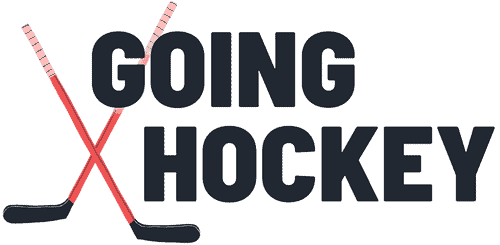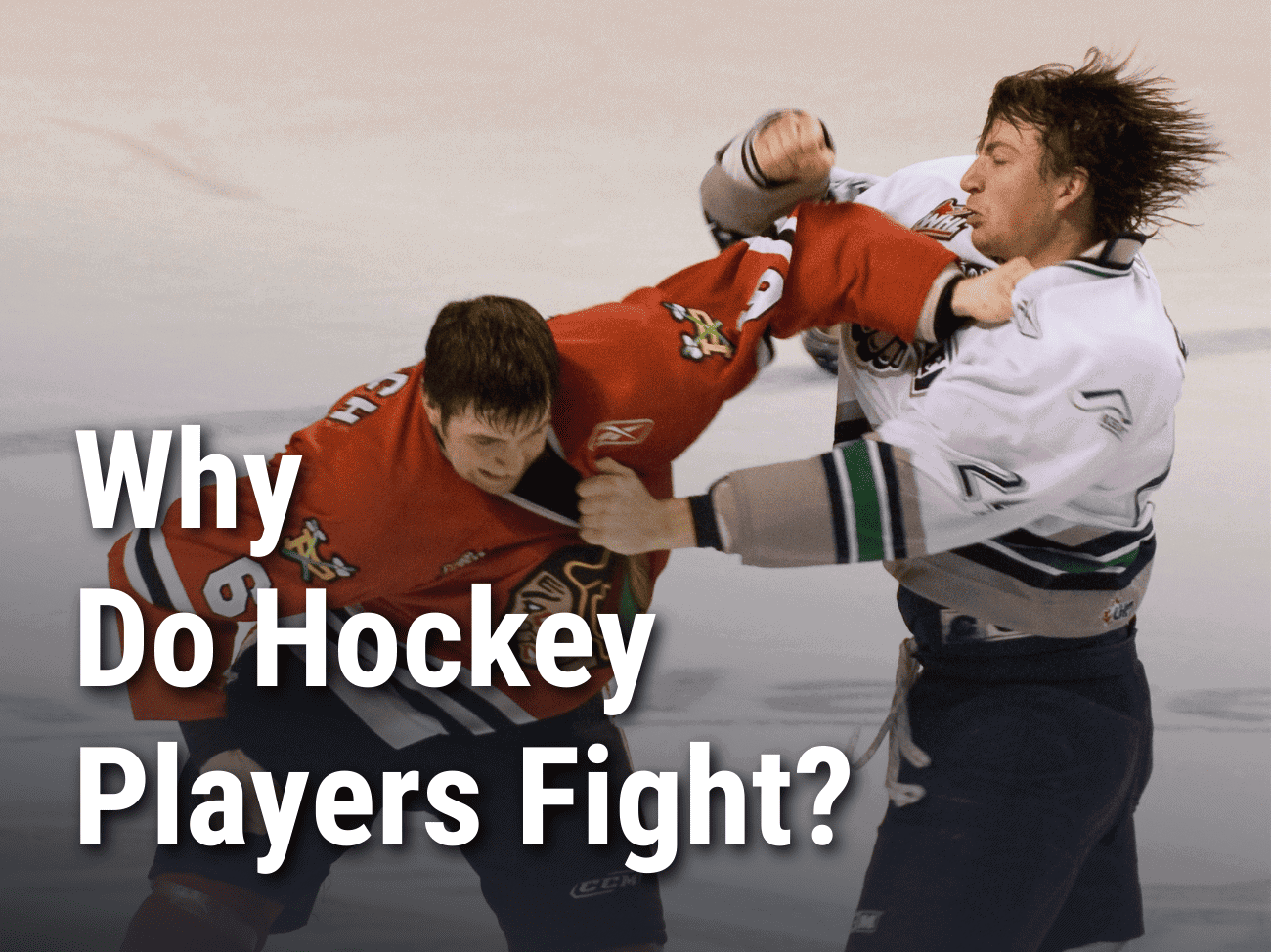Ice hockey, renowned for its intense physicality and high-speed action, captivates audiences around the world with its unique blend of skill, strategy, and occasional bouts of bare-knuckled combat. But the sight of two players fiercely engaging in fisticuffs amid the backdrop of a fast-paced game can leave spectators both mesmerized and perplexed.
Why do hockey players fight?
Hockey players fight for these 3 reasons:
- Protect teammates
- Provide momentum for their team
- Settle grievances
Why Do Hockey Players Fight?
Although there are many reasons for hockey players to fight, the main reasons are to protect teammates, provide momentum for their team, and settle grievances.
Hockey Players Fight To Protect Teammates
Often hockey players will fight to stick up for their teammates – enforcers in the 80s and 90s were especially notorious for this behavior.
For example, Gretzky’s enforcer on the Oilers was Dave Semenko. If you took a run at Gretzky or talked a little too much smack, you would have to answer to Semenko. And Semenko was not a light customer.

Semenko stood at 6’3″ and was known as one of toughest hockey players ever. In one WHL season, he managed to put up 265 penalty minutes while maintaining a point per game average. He acted as Gretzkys “on-ice bodyguard”, which helped the Oilers win 2 Stanley Cups.
Simply put, unless you wanted to fight Semenko, you would leave Gretzky alone. This allowed Gretzky to focus on his game and score more points for the team.
Besides enforcers, normal players will also sometimes fight if they see an opponent mistreat one of their own. If an opponent crosschecks a teammate or targets their head in a hit, players will often retaliate on their teammate’s behalf. This is mainly done to send a message to opponents that they will not get away with that kind of behavior.
Hockey Players Fight To Provide Momentum For Their Team
Another reason why hockey players may fight is to provide momentum for their team. Historically, enforcers used to fill this role, but this behavior is less common nowadays.
That being said, team captains may still be seen starting fights to gain momentum for their team, even if they are not the “enforcer” type. Sometimes it’s the only thing that can be done to “wake up” their team.

If a captain starts a fight for momentum, it will usually be done in the first period of the game. It will only happen when their team is losing badly, and there seems to be no sign of them turning things around.
Whether it’s an enforcer or a team captain, sometimes starting a fight is the only thing that can be done to get your team out of a lull, pull together, and try harder.
Hockey Players Fight To Settle Grievances
The last reason why hockey players fight is to settle grievances or disputes.
If a player believes they have been mistreated or disrespected, they may choose to stick up for themselves and start a fight. These types of fights can be a “heat of the moment” exchange, or a fight that’s been a long time coming.
Either way, fighting to settle grievances usually works to “clear the air” or “settle beef” between players. It’s often more dangerous to let things simmer. Usually, after a hard bout, both players will have expunged their feelings of anger and will be able to move on.
No matter how much players hate each other, fighting it out will usually result in them at least calming down and respecting one another. This is often seen with fighting sports like MMA as well.
Why Is Fighting Allowed In Hockey But Not Other Sports?
Fighting is allowed in hockey but not other sports because it is a tradition of the sport. Asking why fighting is allowed in hockey but not other sports, is kind of like asking, “why are soccer players allowed to kick the ball, but basketball players aren’t?”
That being said, fighting in hockey is usually a lot safer than fighting in other sports because there are rules, both written and unwritten, that govern the fighting behavior of players.

All fighting rules in the NHL are outlined under Rule 64 of the Official NHL Rulebook. Regarding fighting, a player must follow these rules:
- Only fight those who are willing (64.2)
- Do not punch a player who is in a defenseless position (64.2)
- Only fight during game time. (64.9)
- Only fight on the ice. (64.8)
- Stop fighting when the refs deem the fight to be over. (64.5)
- Do not start a fight after one has already begun. (64.7)
- Have a fight strap that keeps the jersey secure. (64.13)
- Do not “third-party” a fight between two players. (64.16)
Failure to comply with the rules of fighting in the NHL will result in ejections, suspensions, and fines.
There are also unwritten rules that help govern fighting. These rules include:
- No gloves
- No sucker punches
- No punching when the player is down
- Pick on someone your own size
Most other sports do not have regulations for fighting like the NHL. Fights in basketball, soccer, baseball, etc. always result in an uncontrolled brawl between teams. On top of that, players in other sports will often kick, spit, throw equipment, continue fights after games, beef online, etc.
Without the backbone of official fighting rules, as well as unwritten rules of conduct ingrained in the culture, other sports are too uncontrolled and chaotic to allow fighting.
Do Hockey Players Agree To Fight?
In most cases, hockey fights don’t happen unless both players agree to fight.
In hockey, dropping the gloves is the universal sign for fighting, and unless both players drop their gloves a fight will not occur. This rule, however, goes out the window if an opposing player does something particularly egregious.

If a player throws a clear cheap shot or obviously targets a teammate with the intention to hurt them, they usually forfeit their right to refuse a fight – and most players understand this. Most players understand that if you target the star player on the other team – with the sole intention to clobber him – the other team will not just let it go. So, by engaging in such actions, you are almost agreeing to a fight by default.
In hockey, you are expected to stand by your actions and stick up for yourself. Even if you messed up, you’re expected to answer for your mistake. However, even in the case of retaliation, most respectable hockey players will stop throwing punches if the player falls, or “turtles”, to the ice.
So, players do agree to fight most of the time.
It is almost unheard of that a player would start throwing punches at an unsuspecting opponent who has done nothing to provoke such an altercation.


Leave a Reply